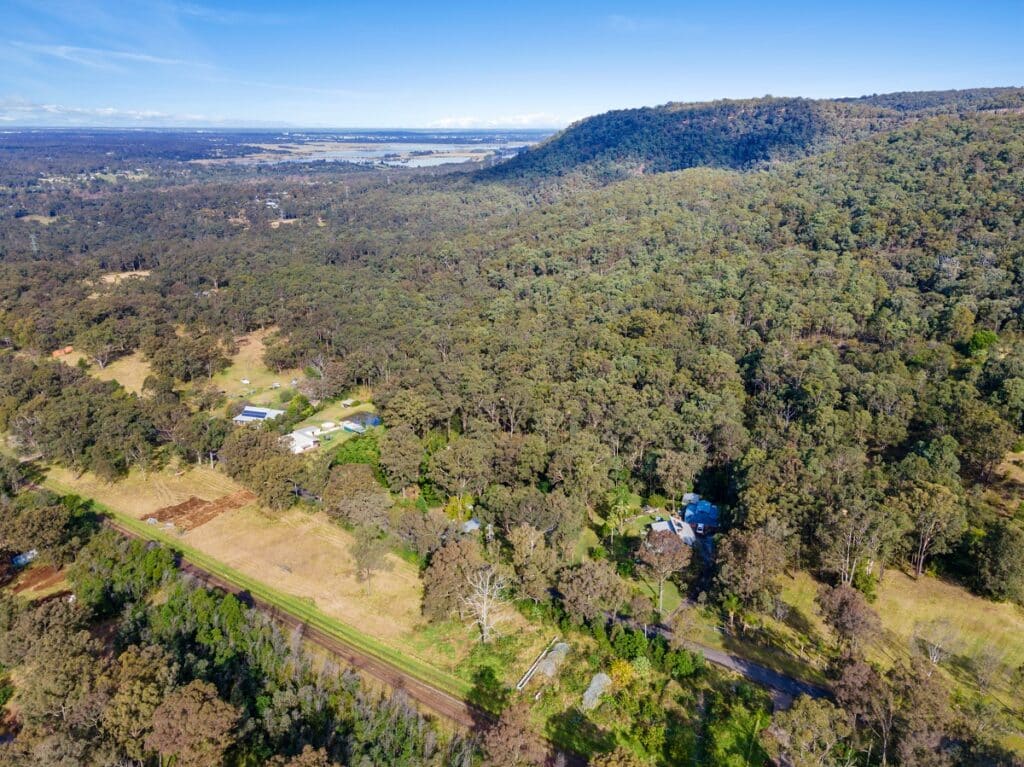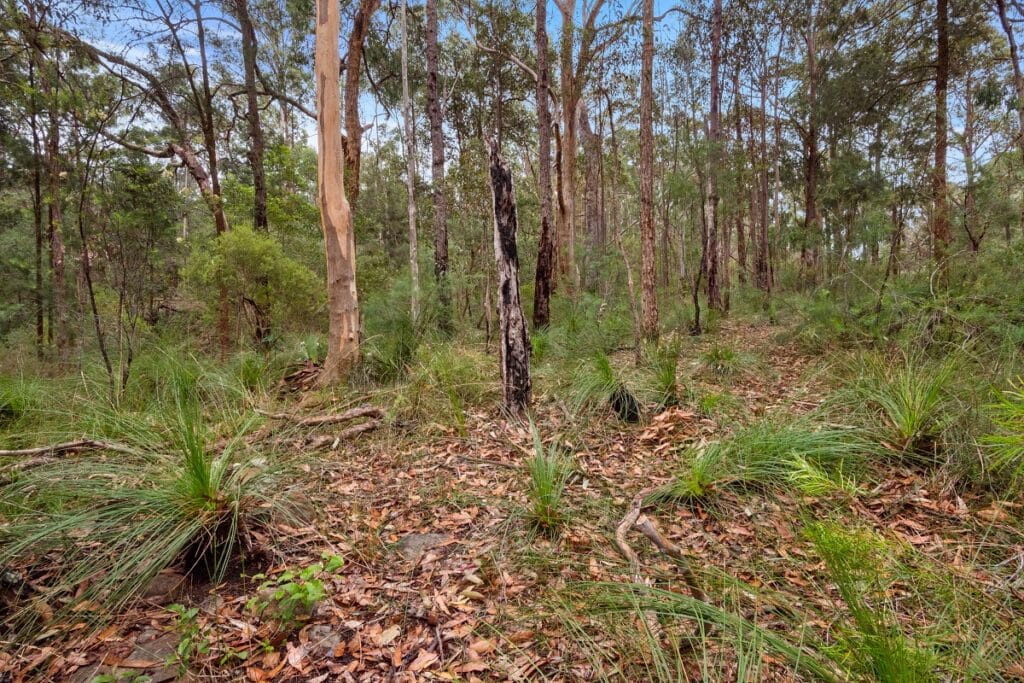Kathy and Meaghan Adam-Cross are the owners of ‘Katheaghan’, a 10.11-hectare property situated in the NSW Hawkesbury District town of Yarramundi. It lies in the foothills of the Blue Mountains and backs onto the Blue Mountains National Park. The property is a residence and small hobby farm set within a dedicated wildlife sanctuary. Meaghan and Kathy have worked to conserve the native bushland and build-up the gardens around the house for 20 years which has retained and created habitat and a refuge for a fascinating array of wildlife. They plan to sell the property to a conservation-minded buyer in the near future.
‘Katheaghan’ is comprised of 9 hectares of remnant native bushland with a further 1.11 hectares containing 3 fenced paddocks, a large dam, a 2-bedroom double-story cedar cottage with outbuildings surrounded by mature gardens of flowering native and exotic trees and shrubs. The property has walking trails through eucalyptus forests, woodlands and native grasslands with sandstone bridges leading over three natural creeks and waterfalls that run with good rain. A rainforest lies in a deep gully as the property rises into the mountain.
The soil is healthy and sustains widely diverse vegetation to make upper, middle and ground stories. It is abundant with towering trees that house active nesting sites for birds and marsupials. Dominant canopy species include Angophora, grey gum (Eucalyptus punctata), red and yellow bloodwood (Corymbia gummifera and Corymbia eximia), stringy barks, grey iron bark (E. paniculata) and turpentine (Syncarpia glomulifera).
The mid and understories include acacias, casuarinas, geebungs (Persoonia spp.), grevilleas, banksias, mountain devils (Lambertia formosa), Xanthorrhoea, blackthorns (Bursaria spinosa), Hibbertia and egg and bacon plants (Eutaxia obovate), interspersed with flax lilies (Dianella spp.), ferns, native orchids, mosses and lichens.
A wide range of wildlife feeds, breeds and shelters on the property including eastern grey kangaroos (Macropus giganteus), swamp wallabies (Wallabia bicolor), brushtail (Trichosurus vulpecula) and ringtail (Pseudocheirus peregrinus) possums, greater (Petauroides volans), sugar (Petaurus breviceps) and feathertail (Acrobates pygmaeus) gliders, grey-headed flying-foxes (Pteropus poliocephalus), microbats, diamond pythons (Morelia spilota), lace monitors (Varanus varius), yellow-faced whip snakes (Demansia psammophis), frogs and native bees.
The property is habitat for over 100 bird species including Gould’s bronze (Chrysococcyx russatus) and little bronze (C. minutillus) cuckoos, tawny frogmouths (Podargus strigoides), channel-billed (Scythrops novaehollandiae) and chestnut-breasted (Cacomantis castaneiventris) cuckoos, eastern koels (Eudynamys orientalis), white-throated nightjars (Eurostopodus mystacalis), Australian boobook (Ninox boobook) powerful (Ninox strenua) and barking owls (N. connivens), superb lyrebirds (Menura novaehollandiae), kingfishers, rainbow bee-eaters (Merops ornatus), dollar birds (Eurystomus orientalis), brown cuckoo (Macropygia phasianella) and bar-shouldered (Geopelia humeralis) doves, Wonga pigeons (Leucosarcia melanoleuca), peaceful (Geopelia placida) and spotted (Spilopelia chinensis) doves, white-winged choughs (Corcorax melanorhamphos), black-faced cuckoo-shrikes (Coracina novaehollandiae), olive-backed orioles (Oriolus sagittatus), wood ducks (Chenonetta jubata) and scarlet honeyeaters (Myzomela sanguinolenta).
The maturity and diversity of the flowering trees and plants also sustain white-cheeked (Phylidonyris niger) and yellow-tufted (Lichenostomus melanops) honeyeaters, little wattlebirds (Anthochaera chrysoptera), grey shrike thrushes (Colluricincla harmonica), white-throated gerygones (Gerygone olivacea), white-throated treecreepers (Cormobates leucophaea), eastern spinebills (Acanthorhynchus tenuirostris), quails, superb fairy-wrens (Malurus cyaneus), willie wagtails (Rhipidura leucophrys), eastern whipbirds (Psophodes olivaceus), spotted pardalotes, mistletoebirds (Dicaeum hirundinaceum), rufous whistlers (Pachycephala rufiventris), thornbills (Acanthiza pusilla), silvereyes (Zosterops lateralis) and eastern yellow robins (Eopsaltria australis).
A range of parrots are also present including red-tailed (Calyptorhynchus banksii) and yellow-tailed (Zanda funerea) black cockatoos, king parrots (Alisterus scapularis), galahs (Eolophus roseicapilla), eastern (Platycercus eximius) and crimson (Platycercus elegans) rosellas and rainbow lorikeets (Trichoglossus moluccanus).













